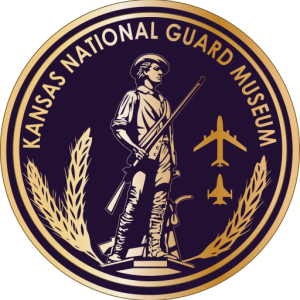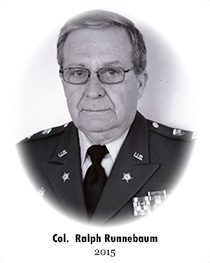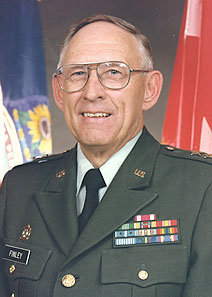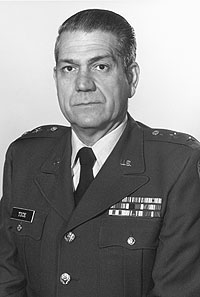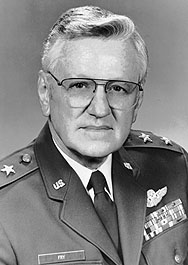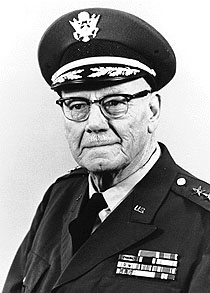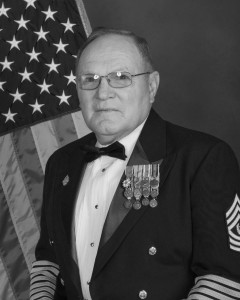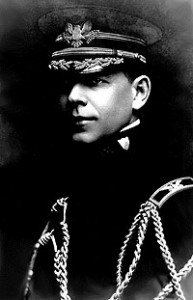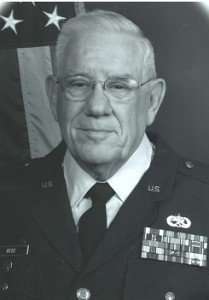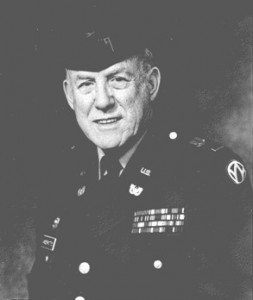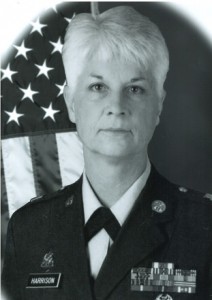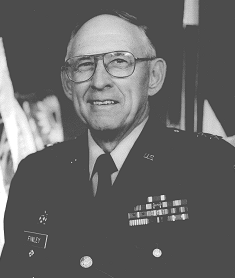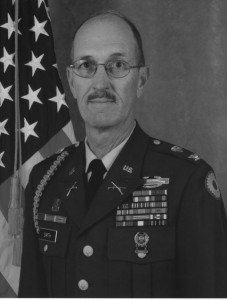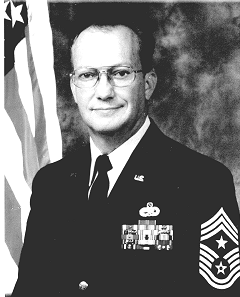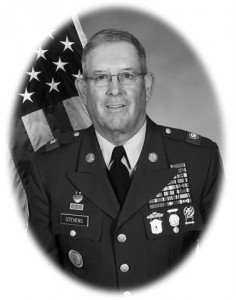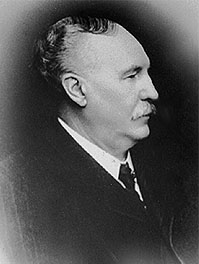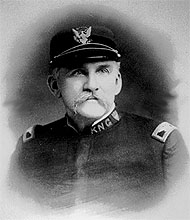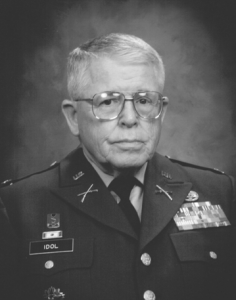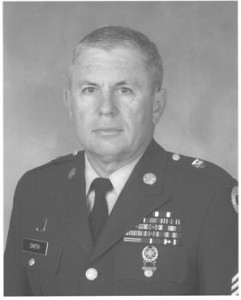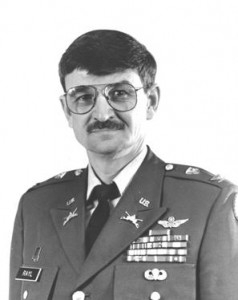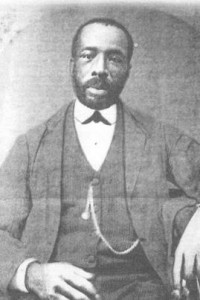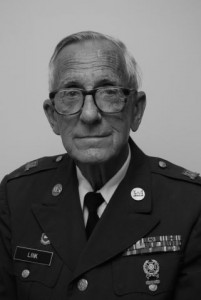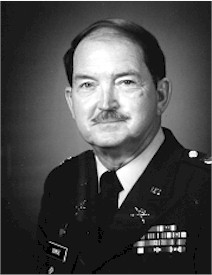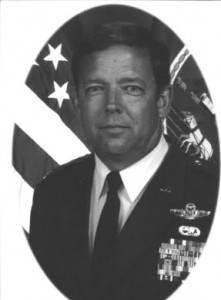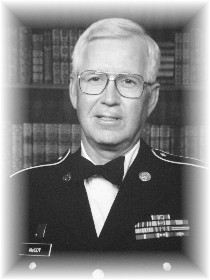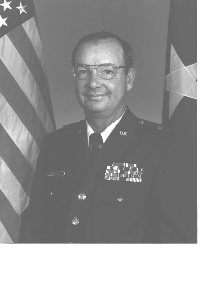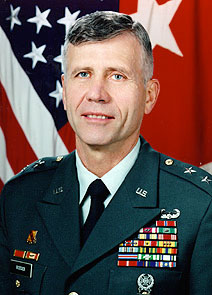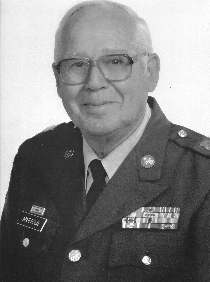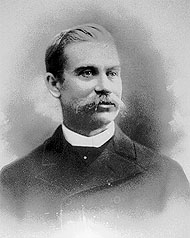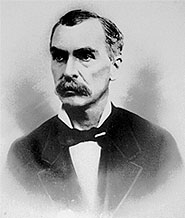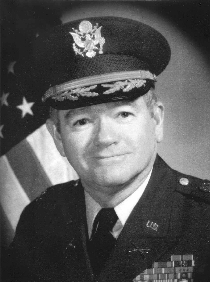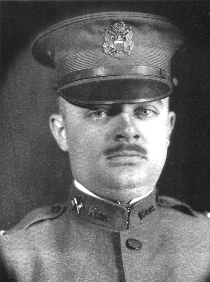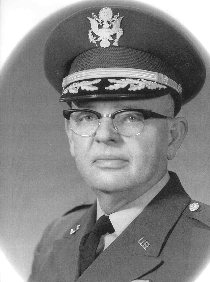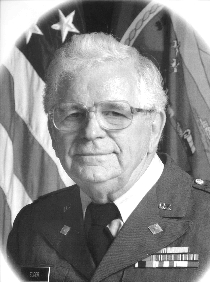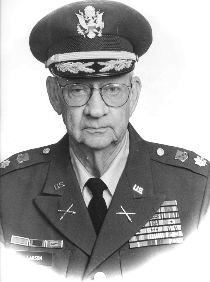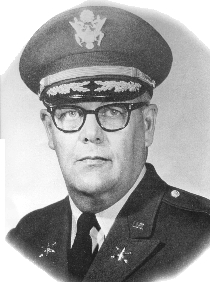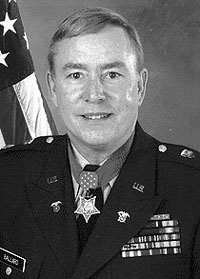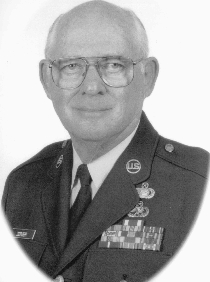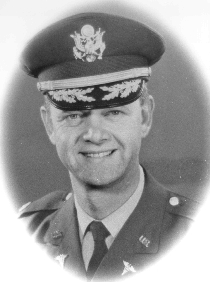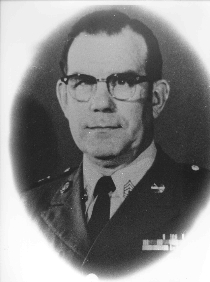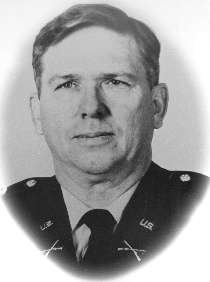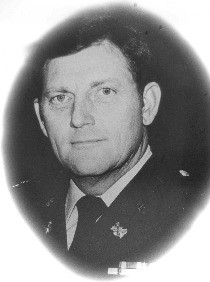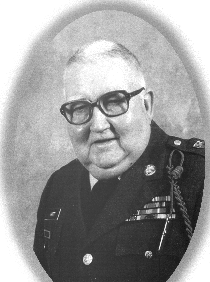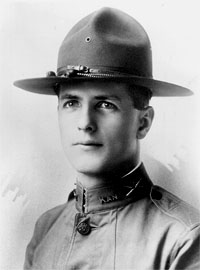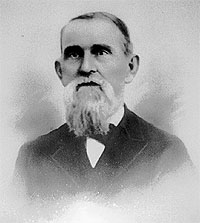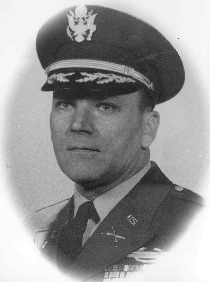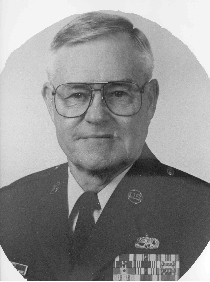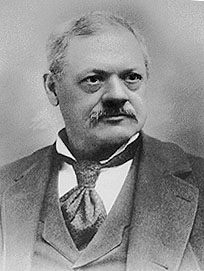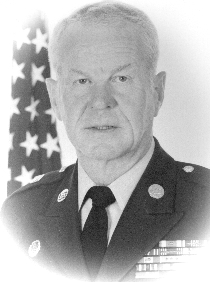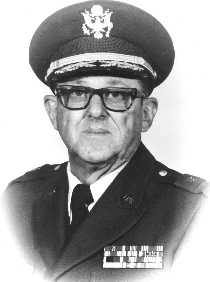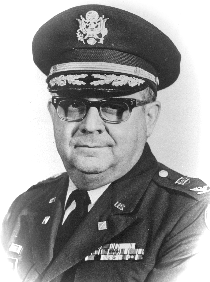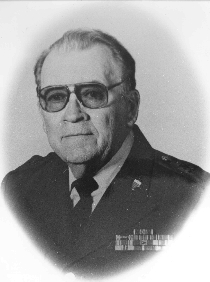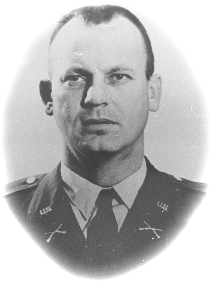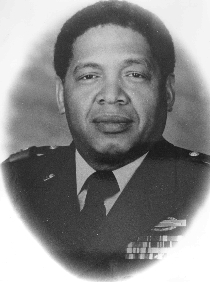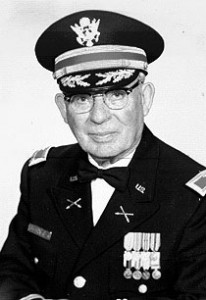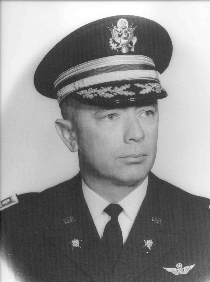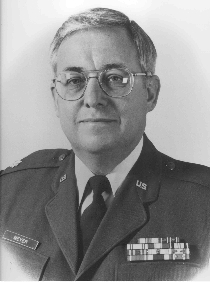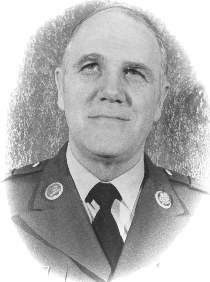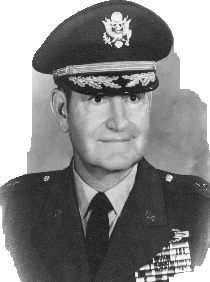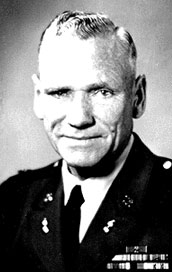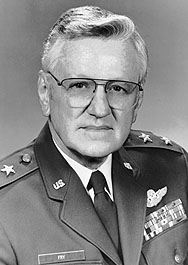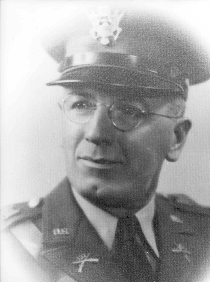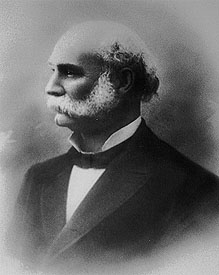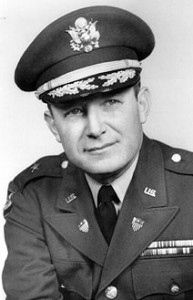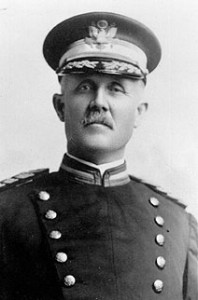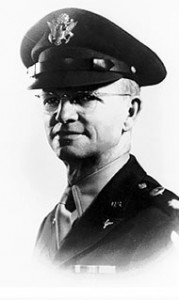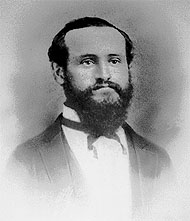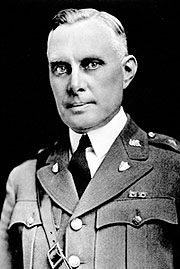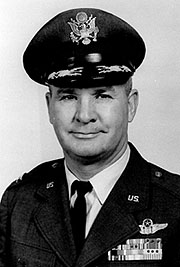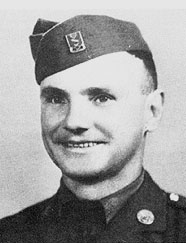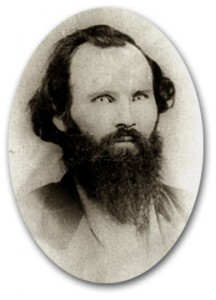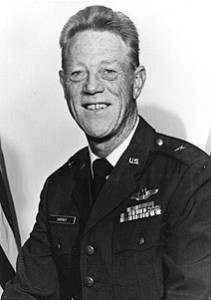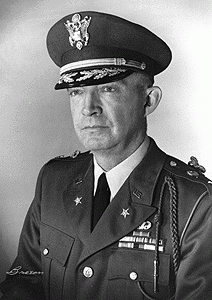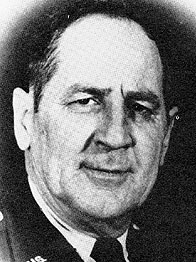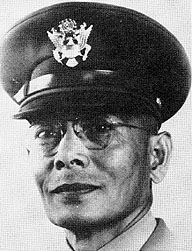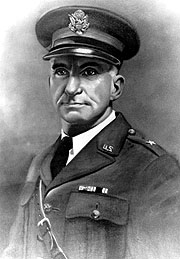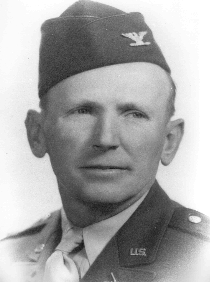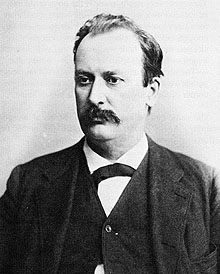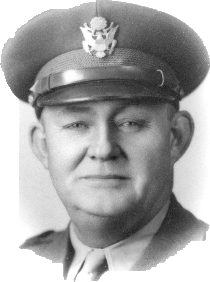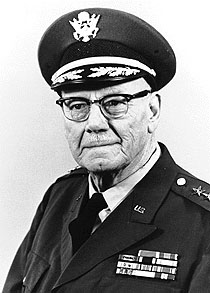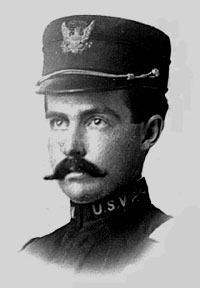The 1968 Mobilization
With the build-up of American forces in Southeast Asia and the piracy of a United States Naval vessel in international waters off the coast of North Korea, America’s ready forces were being drained by expanded commitments. Additional troops were needed to meet worldwide demands. Again, the call went out for the citizen-soldier.
On 11 April 1968, a Presidential Order mustered 12,867 Army guardsmen from 17 states into Federal Service. Among those called were the men of the 69th Infantry Brigade. All major commands of the 69th were Kansas-based except the 2nd Battalion, 133rd Infantry, an Iowa mechanized infantry battalion attached to the 69th at the time of activation. The 241st Military Intelligence Detachment, an Army Reserve unit from Boston, Massachusetts, was also attached. Bankers, lawyers, judges, laborers, teachers, business and civic leaders and other professional men abandoned their “soft” civilian lives to serve their country as members of this highly professional, highly honored infantry outfit.
When the call came down, some of the members of the 69th were fulfilling one of their important functions as state guardsmen. Approximately 1,100 officers and men of the 2nd Battalion, 137th Infantry and the 169th Support Battalion were on state duty protecting life and property in Wyandotte and Johnson counties in Kansas. Although Kansas City, Missouri experienced substantial damage and physical injury during the riots following the assassination of Dr. Martin Luther King, Jr., the men of the Kansas Guard helped to prevent this from occurring in the Sunflower State. They effectively sealed off the eastern sector of Kansas that lay adjacent to Kansas City, Missouri.
Word of the call-up was first received by the 69th from a reporter from the Kansas City Star who “broke up” a staff meeting at the armory in Kansas City, Kansas, by informing the startled officers they were being mobilized. In a message received from the Department of the Army dated ll April 1968, the Brigade was ordered to active duty effective 13 May 1968. The 3rd Battalion, 137th Infantry was not included in the call to active duty for two reasons. In the event of civil disturbances or major natural disaster within Kansas, both state and federal officials felt it desirable to leave an infantry battalion at the disposal of the Governor. In addition, the 3rd Battalion was newly reorganized as an infantry unit and had not yet completed Advanced Unit Training.
Thirty days was all the time that the men had to prepare themselves and their families for an unexpected 2-year tour of active federal service. Despite the fact that some men spent their first three days after notification at the armory on riot duty, those affected had few complaints. As Guardsmen, they had a responsibility to their state and local community. Soon they would accept an even greater responsibility–direct defense of their country.
General Breidenthal and his staff began co-ordinating immediately with the Department of the Army in preparation for mobilization. Much had to be accomplished prior to the scheduled movement to Ft. Campbell, Kentucky. But, on 17 April 1968, a change of destination was announced by the Department of the Army. Now, the 69th was to be sent to Ft. Carson, Colorado. A select force from each headquarters and each company size unit volunteered for early induction to assist Administrative Supply Technicians and other regular staff of the Guard units with the increased administrative requirements necessitated by mobilization. Working quickly but accurately, the men accomplished the monumental task in record time. Later in the month, Colonel Kennedy, Deputy Brigade Commander, and a select staff of officers traveled to Ft. Carson to establish liaison with post officials for the arrival of the unit in May.
At 0600 hours, 13 May 1968, all personnel reported to their respective armories. As packing began, light organization equipment was loaded into the Brigade’s vehicles in preparation for the departure of the advance party on 17 May 1968 for Ft. Carson, home of the “Red Devils” of the 5th Infantry Division (Mechanized}. Heavy equipment was prepared for movement by rail.
While some personnel worked on paper work and loading operations, others continued refresher courses in basic military subjects. Among the topics discussed by commanders with their men were the Code of Conduct, Military Justice, and Military Courtesy. Further, the men were given an orientation concerning the terrain and weather in Colorado, soon to be the new home of the 69th Brigade. This processing and training continued for l0 days. On 17 May, an advance detachment, consisting of a convoy of about five vehicles and 35 men from each battalion and separate company, departed from its home station. While part of the convoy left from Sioux City, Iowa, the remainder left from Topeka, Hiawatha, and Kansas City, Kansas. At 0815, on 19 May, seventy-four vehicles carrying 237 men were escorted through the gates of Ft. Carson. It took most of the day to unload the vehicles; when this task was completed, the men quickly hit the sack. However, the real work began Monday morning. The advance detachment was given only a few days to prepare the barracks for the arrival of the main body. Even with the assistance provided by host units of the 5th Division, the advance detachment had much to do in signing for buildings, cleaning barracks, drawing equipment, and assigning beds to the men of their units who would arrive in less than a week.
Early on the morning of 23 May, the main body of the 69th Brigade arrived at the Mountain Post. Through the gates of Ft. Carson they rolled. On hand to greet them was the Brigade Commander, Brigadier General John W. Breidenthal. The Brigade’s Headquarters and Headquarters Company from Topeka and St. Mary’s led the way, followed by Troop E, ll4th Cavalry from McPherson and Manhattan; the 1st Battalion, 137th Infantry from Wellington, Wichita, Winfield, Newton, and Arkansas City; 2nd Battalion, 137th Infantry from Kansas City, Leavenworth, Atchison, Lawrence and Holton; 2nd Battalion 130th Artillery from Hiawatha, Troy, Sabetha, Horton and Paola; 169th Support Battalion from Kansas City, Topeka, Belleville, and Marysville; 169th Aviation Company from Kansas City; 169th Engineer Company from Emporia, Council Grove, and Eureka; 2nd Battalion (Mech), 133rd Infantry from Sioux City, LeMars, Sheldon, Ida Grove, Cherokee and Mapleton, all in Iowa; and the 241st Military Intelligence Detachment from Boston, Massachusetts. Fort Carson was a familiar site to the men of the 133rd, for they had spent AFT-67 at the post.
The main body from the Kansas units traveled by chartered commercial buses from their home stations. The main force of the 2nd Battalion (M), 133rd Infantry and the 241st MI Detachment moved to Ft. Carson by commercial airlines. Personnel who did not travel with the main convoy traveled to Ft. Carson in privately owned vehicles.
Most of the units moved to a location on the post referred to as the “Mule Barn” area. Upon finding appropriate space for equipment in storage and supply areas, the men unloaded their vehicles. The men also had to unload and put away their personal gear. This type work occupied must of the weekend for the newly activated troops.
Notwithstanding the immense task of getting settled, training began after reveille Monday morning. No time was wasted in preparing the men for their next assignment–whatever it might be! Throughout the first week, all units of the Brigade followed much the same trainingschedule. The first mission was to review military subjects in close-in training areas. After this refresher course in basic military subjects, infantry battalions began tactics at the team and squad level, while other units began training in their particular skill areas.
During the first week, the 169th Support Battalion was busy procuring new equipment for the Brigade. Certain items such as Troop E’s M48A1 Tanks had been left at home. In addition, those troops armed with the famous M1 rifle of World War II and Korean vintage were issued the new M14. Within 45 days, the Brigade had been issued 98% of the equipment normally allocated to an active army brigade in CONUS. All the equipment issued was processed by the Supply Office of the support battalion.
Shortly after arriving at Ft. Carson, two of the Brigade units were attached to train with their divisional counterparts. Troop E, ll4th Cavalry joined the 4th Squadron, 12th Cavalry, 5th Division, and the 2nd Bn, 130th Artillery joined Division Artillery.
Early in June, the individual units began working on training and testing programs at the squad level. This training was integrated with other related subjects, primarily familiarization with and qualification on individual weapons.
One of the time-consuming transitions was from the M1 to the M14 rifle. While on Guard status, the majority of the Brigade was armed with the M1 rifle. Certain personnel also had to be familiarized with the 106mm and 90mm Recoilless rifles, M60 tanks, M-113 personnel carriers, M-114 command and reconnaissance vehicles, and other track equipment issued at arrival at Ft. Carson. On 24 June, the Brigade began refresher training which emphasized squad and platoon level training. During this period, the Brigade was assisted by advisory personnel from the 5th Infantry Division (Mech). Training progressed through the platoon-level testing phase to the company level. Company Army Training Tests were conducted from 27 July to 2 August. All companies of the 69th successfully completed and passed the 31 hour tactical test after which battalion ATT’s were conducted. Again, all units of the Brigade successfully completed this rigorous and difficult task. The competency, high morale, and spirit of the men of the Brigade during these exercises were universally praised by the umpires who rated their performance.
The successful completion of battalion ATT’s paved the way for the 69th’s participation in brigade level operations. Command Post Exercises (CPX) were conducted during 19-22 August and 23-26 September 1968. A Field Training Exercise on 22-25 October was followed by another CPX on 5-7 November. The skill and enthusiasm of the officers and men of the 69th in these exercises brought praise from Major General Roland M. Gleszer, Commanding General of the 5th Infantry Division (Mech) and Fort Carson.
With refresher courses and field training completed, personnel of the 69th began specialized training. Allocations for on-post schools were provided for the 69th and were rapidly filled. Among the first schools were projectionist, generator operators, TAERS (The Army Equipment Records System) and PLL (Prescribed Load List). Also, certain NCO’s in each company were selected to attend Chemical, Biological, and Radiological School; others were sent to radio-telephone operators school, ground surveillance radar training, and wheeled vehicle mechanics training. Some members selected off-post training. They attended Jungle School in the Panama Canal Zone, Drill Instructors School at Ft. Leonard Wood, Missouri, and a variety of other Army Schools.
Leadership School, conducted on post, was another top choice of the NCO’s for improvement of their military skill. Two special classes at the Leadership School were designated solely for members of the 69th Brigade. The record of performance established by members of the 6gth was impressive. According to the Commandant, the average score attained by the 69th Brigade classes was higher than any previous class. When the Fifth Army Recondo Training center was established at Ft. Carson, men of the 69th jumped at the chance to attend the physically and mentally strenuous 4-week course. Of the 35 graduates of the first class, 27 were from the 69th Brigade. This mark was equalled or bettered in subsequent Recondo classes while the Brigade was at Ft. Carson. While on numerous occasions, the honor graduate was from the Brigade, 69th personnel generally made up the top ten graduates.
The Expert Infantry Badge is an award sought by infantrymen throughout the U. S. Army. Tests for this award were conducted at division level early in 1969. Old-timers at Carson recalled that seldom if ever did more than 10% of the men taking the test win this coveted award. However, out of the 143 men of the 69th Brigade taking the test, 127 earned their badge, or over 88%.
During October and November 1968, the 1st and 2nd Battalions of the 137th Infantry conducted extensive training in airmobile operations. The Commanding General of the 5th Division rated these infantry battalions as the best airmobile units in CONUS. These units flew some 1447 hours in 25 major tactical airlifts.
After federal troops had to be called in to assist National Guard units during civil disorder in the mid-1960’s, all federal troops began receiving training in riot control. The 69th, like all reserve units, had undergone extensive training in this area. After their initial training period was completed, Brigade units began reviewing their riot training. Like all units at Ft. Carson, the 69th would take its turn on Operation “Garden Plot” a riot alert program.
Because of its practical experience and extensive training, the 69th was one of the best prepared and trained units for this type service. But a new aspect had been added to their training–airlift operations. This alert plan for rapid de-ployment of troops to riot areas was much different that summoning members to the armory during civil disorders. If the 69th was called, its area of responsibility could be anywhere in the nation.
The training for Operation “Garden Plot” was outlined in a Presidential Order in March 1968. It included principles and practices of riot control operations, use of chemical agents and chemical dispersers, protective masks in riot control operations, riot control formations (squad-platoon-company); and a battalion field exercise in suppressing domestic disturbances.
In mid-July, first reports were received of plans to levy individuals of the 69th for service in other units, both in the states and overseas, but primarily in the Republic of South Vietnam. After the levy hit the 69th, the men on orders began their POR {preparation for overseas replacement} training.
The levies continued on a monthly basis. Each time a levy came down, the number of men increased until 2,301 officers and enlisted men were on orders. The levying of Brigade personnel continued until May, l969. At first, the levies took support-type troops whose skills were needed, such as medics, wiremen, and other critical MOS’s. Infantry captains were among the first officers to get orders. Finally, about 60 percent of the enlisted men and 95 percent of the officers of the 69th were levied. All but a few went to Vietnam. Of the infantry troops, primarily llC’s were being called. These heavy weapons personnel came primarily from the 1st and 2nd Battalions of the 137th Infantry Regiment. In addition, the mechanized battalion from Iowa was hit hard by the replacement levies. In fact, none of the original Brigade units escaped the levy.
The first of the 69th Brigade troops arrived in Vietnam in late October. After a brief processing period and a training program in jungle terrain and tactics, the men were assigned to numerous units in Vietnam. They took their place alongside “regular” Army troops. They did the job that was asked and did it well.
Command of the 69th changed on 28 September 1968, when General Breidenthal was assigned as Assistant Division Commander for Support of the 5th Infantry Division (Mech). This was brought about as a result of the 1st Brigade of the “Red Devil” Division being posted to Vietnam and the 69th phased into the force structure of the 5th Division as a divisional type brigade. Later, General Breidenthal assumed the position of Assistant Division Commander for Maneuver. Colonel Thomas J. Kennedy, Deputy Brigade Commander, assumed command of the 69th, and held this position until the unit was ready to revert to National Guard status in December of 1969. While many 69ers went overseas, others were assigned to different sections of the 5th Division and other units at Ft. Carson. Because of their civilian talents, the Commanding General of the 5th Division felt that these men could be put to better use. Personnel were taken from the 69th to fill key positions throughout the division. General Gleszer said, “It is a standing policy around Division Headquarters that whenever someone is needed who possesses a particular trade or ability you always look to the 69th Brigade to fill the need when no one else is able to.”
Again the members of the 69th proved that no job was beyond their capability, whether it was in combat or in a peaceful situation.
During all this time, training continued at all levels of the Brigade. As long as the Brigade, or its individual personnel were needed, they had to maintain their readiness. As the original Brigade personnel were reassigned, replacements began to fill the manpower gaps in units of the 69th. Many of these replacements were young soldiers right out of Advanced Individual Training, but the majority were Vietnam veterans. This combination of replacements worked well. The combat veterans added their practical experience to the training being conducted. This proved valuable to Brigade personnel who were later levied to Vietnam. These veterans also played an important part in breaking in the newer soldiers.
At Fort Carson, a rating system was established to evaluate the performance of major units. About 25 topic areas were rated by the 5th Division in establishing an overall numerical evaluation. These areas included POR qualification, IG ratings, number of congressional inquiries, and morale indicators such as bad checks, AWOL ratings, pass violations, re-enlistments, automobile accident rates and savings bond participation. A score of zero was perfect. The 69th Brigade distinguished itself again by receiving an overall numerical evaluation average of 15.3, the lowest of any major unit at Ft. Carson, from August 1968 to May 1969.
An important part of the statistical summary is the Command Maintenance Management Inspection (CMMI). This inspection, considered a nightmare by many unit commanders, is divided into two parts, (1) material and (2) maintenance operations. The first part measures the condition of unit equipments, such as weapons, vehicles, tracked vehicles, etc. The second portion of the inspection deals with records and records management. There was some concern about the 69th’s ability to receive a passing score of 70 because the “Regular Army” CMMI is more rigorous than the National Guard version. Besides, a great deal of equipment the 69th had was old and showing wear.
The Brigade average was 84.3 for the material section of the inspection and 86.3 for the maintenance operations portion.
The remarkable record established by the Brigade was not limited to individual and unit training. The Brigade led the way in a variety of other activities. The 69th Brigade captured two consecutive baseball championships. In 1969, the baseball team racked up a 17-1 record and easily captured the post crown. The grid squad captured the post championship in 1968 in the first Red Diamond Bowl. The 69er’s trounced the 2nd Brigade 22-7. In their final season, the football team sported a 5-1 record, but lost the post title to the 3rd Brigade in a 22-18 battle in the second annual Red Diamond Bowl.
The Brigade also led Ft. Carson units in the purchase of U. S. Savings Bonds. At one time or another, all units of the Brigade reached the 90 percent participation level. Some fell short of 100 percent participation by less that 2 percentage points.
Charitable efforts also benefited from the spirit of the 69th. The Brigade led the post in contributions to the Combined Federal Campaign. During the 1968 Christmas season, the guardsmen assisted local charitable organizations around Ft. Carson. They almost completely remodeled a Catholic orphanage in Pueblo, Colorado. They also pitched in to help with remodeling and construction at a boy’s ranch near Woodland Park. Some units assisted civilians in repairing toys for needy youngsters in the Pike’s Peak region. Wives of Brigade members who had moved to Colorado to be near their husbands each did their bit–involving themselves in a variety of charitable and civic activities.
Midway in 1969, it was announced that men of the 69th could be released early from active duty to return to school or certain seasonal type jobs. Several hundred men, including many Brigade members in Vietnam, took advantage of the plan. Originally, those men in Vietnam who did not take an early out were scheduled to return to Ft. Carson around Thanksgiving. However, this schedule was changed and those men returned to their home towns and waited there for the Brigade to return from Carson early in December.
On 25 November 1969, the colors of the 69th were cased in a review before Lieutenant General Vernon P. Mock, Commanding General of the Fifth United States Army. General Mock praised the men of the 69th for their dedication and ability and lauded their accomplishments both at Ft. Carson and at other duty stations.
The 69th spent about a week preparing for the return to home stations. During this period, General Breidenthal reassumed command of the Brigade. Most organizational equipment was left at Ft. Carson to be replaced by the state when the units returned home.
Upon arrival at their home station, many old friendships were renewed and many stories exchanged. Of the 324 officers and 2,073 enlisted men of the Brigade who served in Vietnam, 40 paid the supreme sacrifice; with hundreds being wounded in Vietnamese combat. Eleven men of the Brigade were awarded the Silver Star Medal for Gallantry in Action, with SSG James R. Todd of the 2nd Battalion, 137th Infantry, at the time serving with the 12th Cavalry in Vietnam, receiving two awards of the Silver Star. Hundreds of other 69th Brigade personnel received numerous valor and achievement decorations for their service at Fort Carson and in Vietnam.
Finally, on 12 December 1969, demobilization ceremonies were held at various armories throughout Kansas and Iowa. The 69th Brigade officially reverted to state control at 0001 hours, 13 December 1969. The accomplishments of the 69th and its men were praised by many local officials and other dignitaries. Awards ceremonies were held to honor some of the decorated men of the units.
Since the Army did not send the 69th to Vietnam as a unit, there are no new battle streamers to be added to the Brigade colors, but the sacrifices and performances of the individual members of the 69th will be remembered long after battle streamers become tattered and torn. The tradition and excellence of the 69th Brigade will be carried on by career soldiers who served with the Brigade, those veterans who continue to serve with the Brigade, and those young Kansans who will become part of the 69th in the years to come. For as long as they live they will take with them the high morale, esprit de corps, and standards of performance that are the mark of the 69th Brigade. These men can truly say, “Tested, Proven and Proud — I am the 69th Infantry Brigade.”
(Reprinted from “THE BATTLE OF FORT CARSON, VIETNAM AND RETURN,” the program for 69th Infantry Brigade (Separate). Second Reunion In Commemoration of the Brigade’s Mobilization for Federal Active Duty (13 May 1968 – 12 December 1969), Topeka, Kansas, 28-29 October 1994. Transcription provided by Bryce Benedict.)

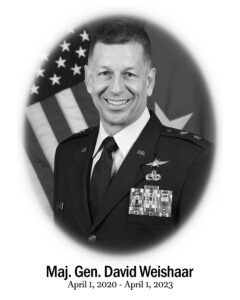 Maj Gen David Weishaar
Maj Gen David Weishaar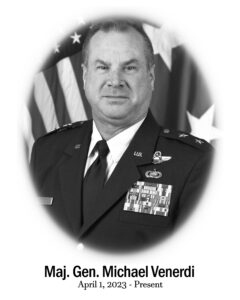
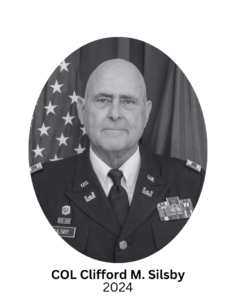
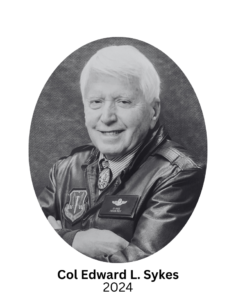
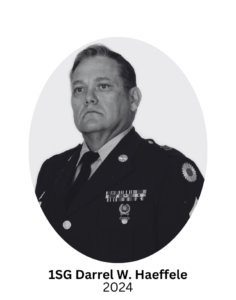 First Sergeant Darrel W. Haeffele was born on September 25, 1940, in Falls City, Nebraska. He graduated from Atchison High School in 1958. He attended Concordia College in Seward, NE for two years before starting a career in retail.
First Sergeant Darrel W. Haeffele was born on September 25, 1940, in Falls City, Nebraska. He graduated from Atchison High School in 1958. He attended Concordia College in Seward, NE for two years before starting a career in retail.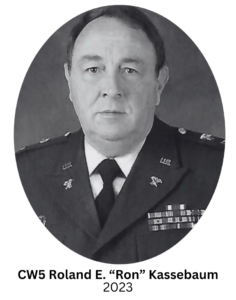 CW5 Roland E. “Ron” Kassebaum was born on February 21, 1946 in Deshler, Nebraska. He graduated from Hebron High School, Hebron, Nebraska in 1964. He attended Fairbury Junior College, Fairbury, Nebraska and the University of Nebraska, Lincoln, Nebraska, and received a Bachelor of Science Degree from the University of the State of New York in 1991. He later attended Liberty University, Lynchberg, Virginia, for courses in accounting and Allen County Community College, Iola, Kansas, for a course in Business Law.
CW5 Roland E. “Ron” Kassebaum was born on February 21, 1946 in Deshler, Nebraska. He graduated from Hebron High School, Hebron, Nebraska in 1964. He attended Fairbury Junior College, Fairbury, Nebraska and the University of Nebraska, Lincoln, Nebraska, and received a Bachelor of Science Degree from the University of the State of New York in 1991. He later attended Liberty University, Lynchberg, Virginia, for courses in accounting and Allen County Community College, Iola, Kansas, for a course in Business Law.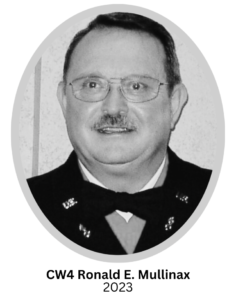 Chief Warrant Officer Four Ronald E. Mullinax was born on August 25, 1946, in Norton, Kansas to Earl and Mary Posson. He was adopted by John and Ada Mullinax. He grew up in Lenora, Kansas, graduating from Lenora Rural High School in 1965. After completing a Denver Automotive Institute training program, Ron worked at Look Body Shop in Norton until 1968.
Chief Warrant Officer Four Ronald E. Mullinax was born on August 25, 1946, in Norton, Kansas to Earl and Mary Posson. He was adopted by John and Ada Mullinax. He grew up in Lenora, Kansas, graduating from Lenora Rural High School in 1965. After completing a Denver Automotive Institute training program, Ron worked at Look Body Shop in Norton until 1968.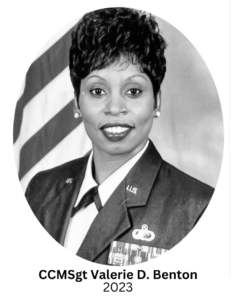 CCMSgt Valerie D. Benton was born on Dec. 10, 1959 in Racine, Wisconsin, where she spent her childhood. She graduated from Washington Park High School in 1978. Soon after graduation she enlisted in the U. S. Air Force and headed to Basic Training at Lackland AFB, Texas in December of 1978. After completion of Basic training, she attended Technical Training at Lowry AFB, Colorado, and graduated as a Food Service Specialist.
CCMSgt Valerie D. Benton was born on Dec. 10, 1959 in Racine, Wisconsin, where she spent her childhood. She graduated from Washington Park High School in 1978. Soon after graduation she enlisted in the U. S. Air Force and headed to Basic Training at Lackland AFB, Texas in December of 1978. After completion of Basic training, she attended Technical Training at Lowry AFB, Colorado, and graduated as a Food Service Specialist.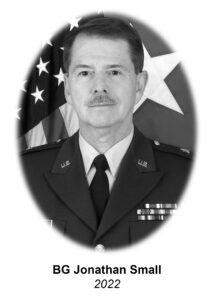 Brigadier General Jonathan P. Small served as The Adjutant General of Kansas from November 1, 2003 to January 4, 2004, culminating a 35-year military career as a distinguished attorney, community leader, citizen-soldier, and military leader. He served as Assistant Adjutant General-Army from 1999 to 2003, and as Commander of the Land Component for the Joint Force Headquarters-Kansas.
Brigadier General Jonathan P. Small served as The Adjutant General of Kansas from November 1, 2003 to January 4, 2004, culminating a 35-year military career as a distinguished attorney, community leader, citizen-soldier, and military leader. He served as Assistant Adjutant General-Army from 1999 to 2003, and as Commander of the Land Component for the Joint Force Headquarters-Kansas. General James H. Lane was a militia leader during the Bleeding Kansas period, the commander of the Kansas “Jayhawker” Brigade during the Civil War, and was one of the first United States Senators from Kansas.
General James H. Lane was a militia leader during the Bleeding Kansas period, the commander of the Kansas “Jayhawker” Brigade during the Civil War, and was one of the first United States Senators from Kansas.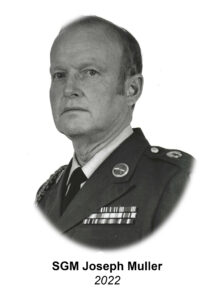 Sergeant Major Joseph T. “Jody” Muller was selected for the Kansas National Guard Hall of Fame for his exceptional service as a citizen soldier in the Kansas National Guard for over 41 years.
Sergeant Major Joseph T. “Jody” Muller was selected for the Kansas National Guard Hall of Fame for his exceptional service as a citizen soldier in the Kansas National Guard for over 41 years.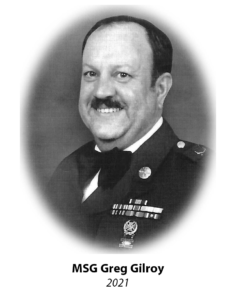 Master Sergeant Greg Gilroy was born on July 25, 1947 at Ottawa, Kansas. He was a lifelong resident of Ottawa, graduating from Ottawa High School in 1965. He then attended Emporia State University during the 1965-66 school year.
Master Sergeant Greg Gilroy was born on July 25, 1947 at Ottawa, Kansas. He was a lifelong resident of Ottawa, graduating from Ottawa High School in 1965. He then attended Emporia State University during the 1965-66 school year.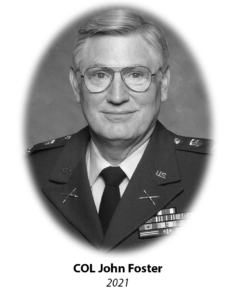
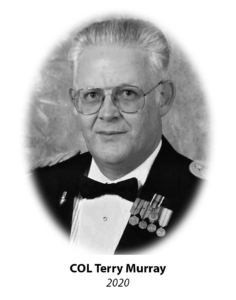
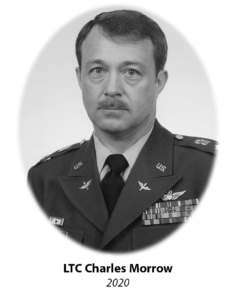

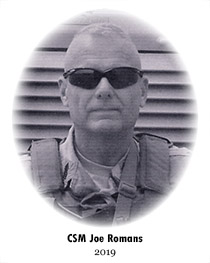
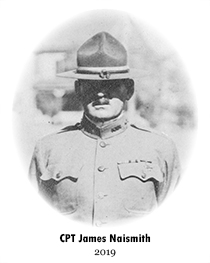

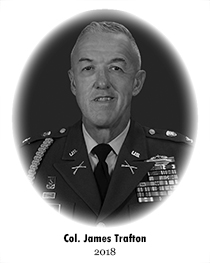
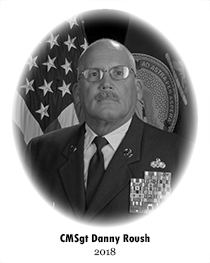
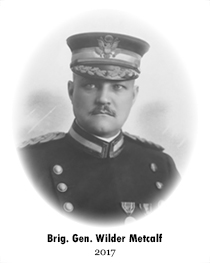
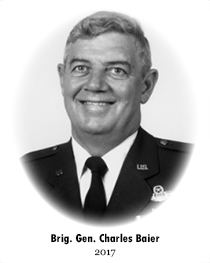
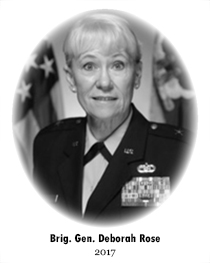 Brigadier General Deborah Rose entered military service with a direct commission into the United States Air Force Nurse Corps in March 1983, assigned to the 184th Tactical Fighter Group. She transferred to the 190th Clinic in December 1985. In October 1990, she deployed to Jeddah, Saudi Arabia, where she served in an Air Transportable Hospital during Desert Shield. In February 1991, she was activated and deployed to Offutt AFB, Nebraska, assigned to the hospital.
Brigadier General Deborah Rose entered military service with a direct commission into the United States Air Force Nurse Corps in March 1983, assigned to the 184th Tactical Fighter Group. She transferred to the 190th Clinic in December 1985. In October 1990, she deployed to Jeddah, Saudi Arabia, where she served in an Air Transportable Hospital during Desert Shield. In February 1991, she was activated and deployed to Offutt AFB, Nebraska, assigned to the hospital.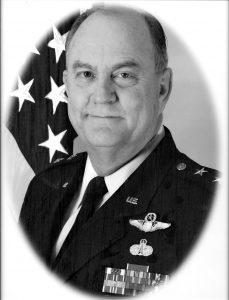
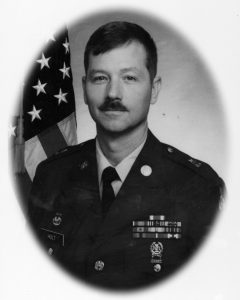 Sergeant Major Lynn E. Holt built his distinguished Kansas Army National Guard career developing strength, retaining Soldiers and insuring Soldiers received proper training. He served from the Detachment through State level. He is known for his ability to recognize Soldier needs at all levels. The same care he felt for Soldiers carried over into his community activities. SGM Holt’s passion for people and their needs exemplifies his true character. He devoted his entire adult life to the betterment of our nation, our state and the Kansas National Guard.
Sergeant Major Lynn E. Holt built his distinguished Kansas Army National Guard career developing strength, retaining Soldiers and insuring Soldiers received proper training. He served from the Detachment through State level. He is known for his ability to recognize Soldier needs at all levels. The same care he felt for Soldiers carried over into his community activities. SGM Holt’s passion for people and their needs exemplifies his true character. He devoted his entire adult life to the betterment of our nation, our state and the Kansas National Guard.